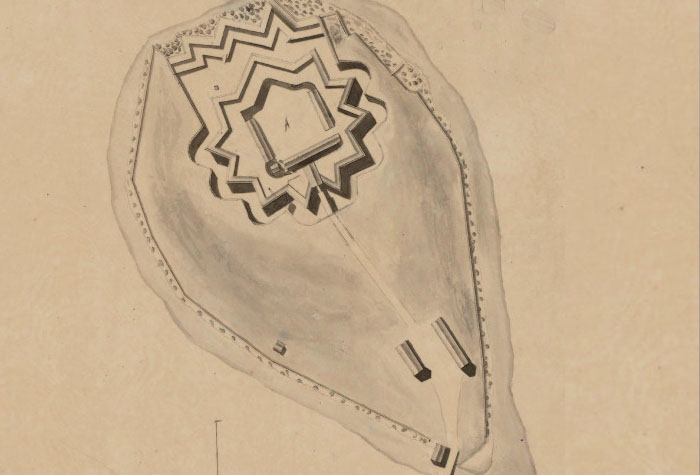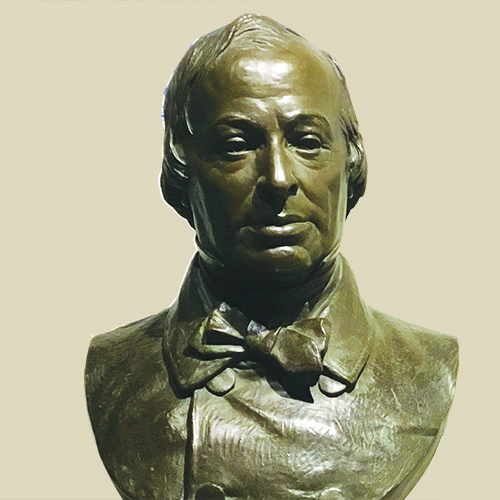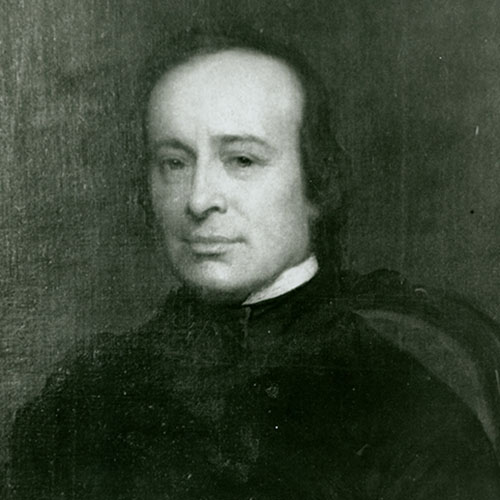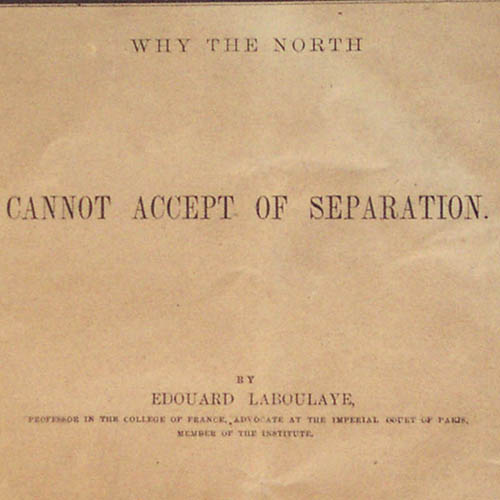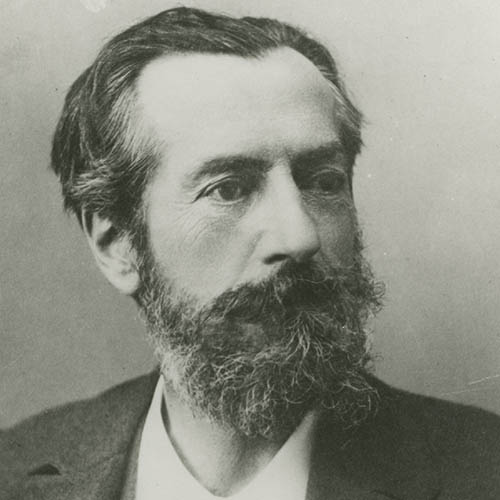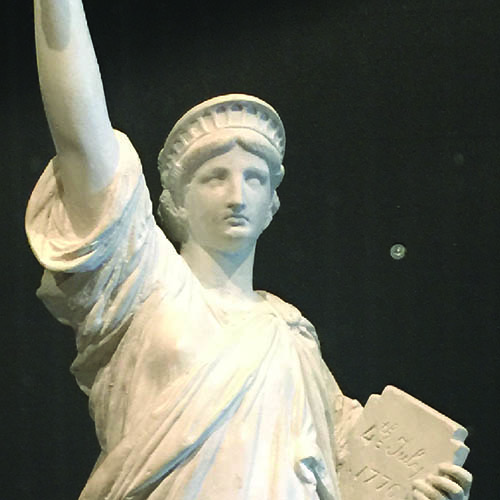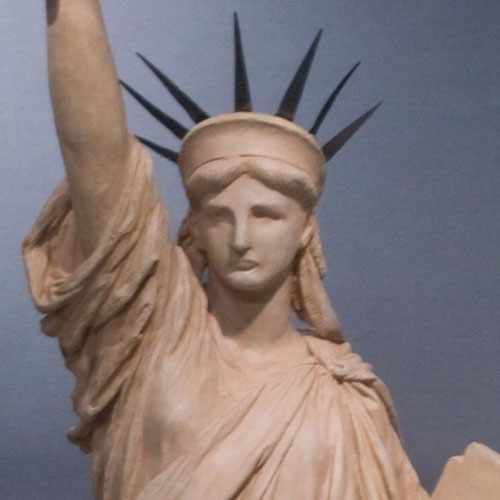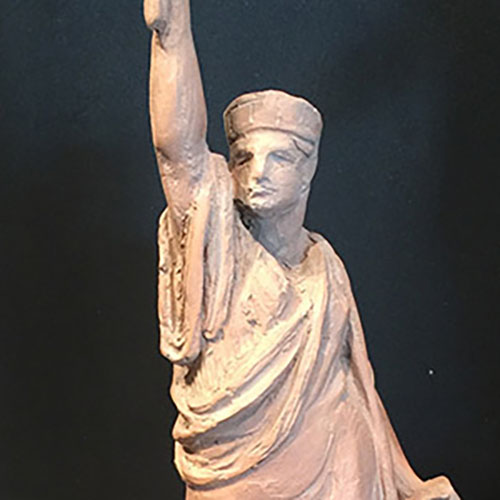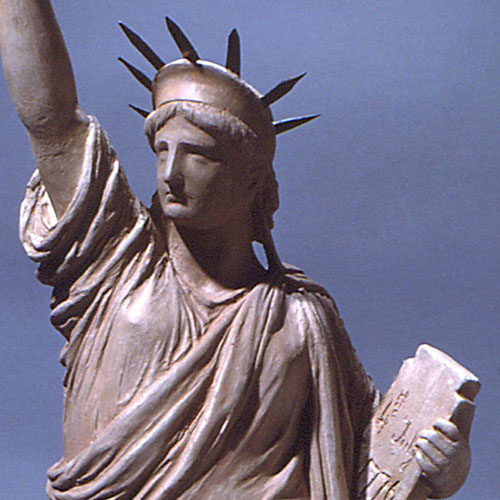Imagining Liberty
Liberty Enlightening the World is its official title. It became known simply as the Statue of Liberty. Dedicated in 1886, the Statue represents a grand interpretation of an abstract ideal of liberty, born out of an age of revolutions—particularly the American and French Revolutions. It embodies liberty as envisioned by two Frenchmen, Édouard René Lefèbvre de Laboulaye and Frédéric-Auguste Bartholdi, for whom political democracy and freedom from oppression were central to liberty’s meaning.
The Statue was intended to be a spectacular birthday gift from the French people to the people of the United States. At the same time, it represented more than international friendship and affection; it reaffirmed the two countries’ shared commitment to the ideal of liberty. Although never directly stated by Bartholdi or Laboulaye, the Statue was also intended, in part, to celebrate the abolition of slavery in the United States.
